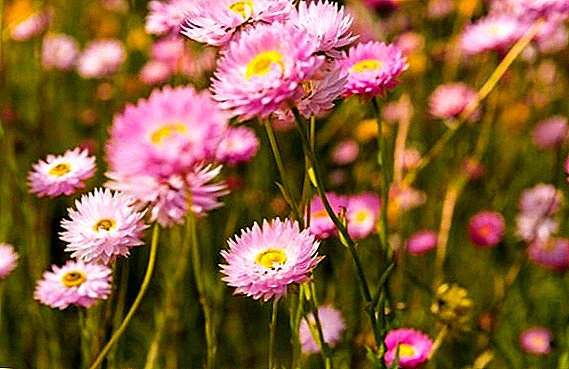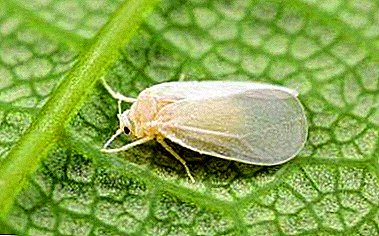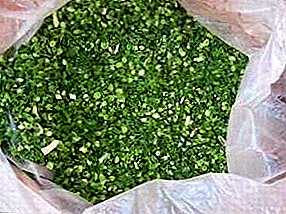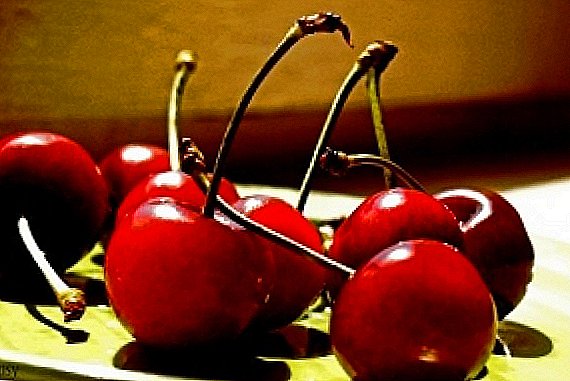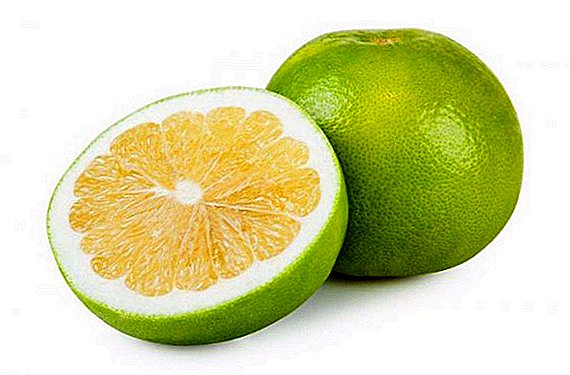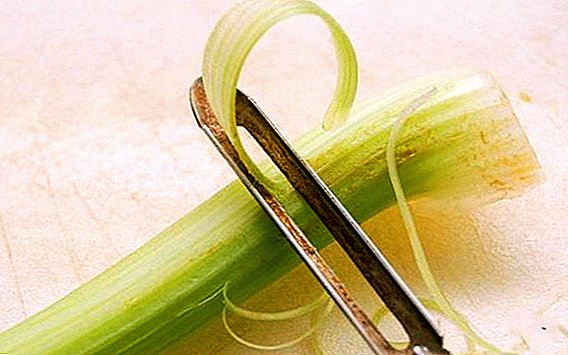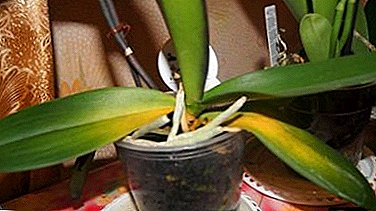
Phalaenopsis orchid is considered one of the most hardy and unpretentious varieties for indoor breeding. But with prolonged improper care, even she does not stand up. The most common and obvious sign, indicating that the plant is not all right, - yellowing and wilting of the leaves.
What does yellowing look like and why does it appear on the lower and upper leaves?
Yellowing is a natural consequence of the death of plant tissue. Yellow leaves and stems lack chlorophyll - a substance responsible for the process of photosynthesis, which is the main source of energy for the plant. Such parts are a burden to the plant and soon dry out and fall off.
Depending on the reason for phalaenopsis indisposition, yellowing will look different. Sunburns leave uneven brown spots, with a lack of moisture, the leaves will become dry and yellow, with an excess of it - sluggish and moist.
Not only the leaves, but also the stem of an orchid can turn yellow.. This suggests that the problem has become large-scale, it will be much more difficult to save such a plant.
Causes of the problem
 Before taking any measures to rescue phalaenopsis, it is important to understand what caused the problem, otherwise the chances of irreparable damage to the plant are high.
Before taking any measures to rescue phalaenopsis, it is important to understand what caused the problem, otherwise the chances of irreparable damage to the plant are high.
The main causes of yellowing include:
- excessive watering;
- lack of moisture;
- burns from direct sunlight;
- insufficient lighting;
- improper feeding;
- fungus, bacteria, parasites;
- natural aging of the plant.
Unfortunately, the yellowed leaves will have to be removed, since it is already impossible to save them, it is important to stop the spread of the problem in a timely manner, understand its cause and take appropriate measures.
How to understand what color can change?
Yellowing of the leaf can occur very quickly, therefore it is important to regularly inspect the orchid every 3-4 days. Having noticed the first signs of leaf color change, it is necessary to immediately start rescuing phalaenopsis.
If the damage area is insignificant (small yellow or yellow-green areas, dry leaf edge or dry brown spots), if the source of the problem is eliminated quickly, the leaf will be saved and the orchid will not need a long rehabilitation period.
Step-by-step instructions on what to do for treatment
As stated earlier, before proceeding to treatment, it is necessary to determine exactly what caused the yellowing of the orchid.
Natural causes
Over time, the leaves of any plant grow old and die; it is normal for phalaenopsis to lose one leaf per year, this is a natural process that does not require any response.
Sunburns
 Orchids need bright lighting, but they do not tolerate direct sunlight. If overheating occurs, the leaves may partially dry out. First aid in this case will be to eliminate the source of damage - the orchid must be moved to a shaded place with diffused lighting.
Orchids need bright lighting, but they do not tolerate direct sunlight. If overheating occurs, the leaves may partially dry out. First aid in this case will be to eliminate the source of damage - the orchid must be moved to a shaded place with diffused lighting.
Leaves exposed to the sun should not be removed.Despite the unaesthetic appearance, their healthy part is still able to benefit the plant.
Lack of light
Orchids - tropical plants and accustomed to the length of daylight at least 10 hours. Lack of light, especially in winter, can lead to yellowing and fading of the leaves. You can compensate for the lack of natural light with the help of special fitolamps; ordinary fluorescent ones will also work.
Important! When using artificial lighting it is necessary to choose lamps that do not emit heat.
Incorrect dressing
Both a shortage and an overabundance of fertilizer can have a devastating effect on phalaenopsis. With insufficient feeding, you can use the universal fertilizer for orchids.
When first used, the concentration of fertilizer must be reduced several times from the recommended. In the future, it is necessary to gradually increase it in about 3 months to reach the amount specified in the instructions.
When it comes to fertilizer oversupply, first of all you need to immediately stop feeding. If leaf yellowing does not stop, the following procedure is recommended.:
- The orchid is removed from the pot and placed in a container with room temperature water for 30–40 minutes.
- The root system is carefully inspected, all dry and damaged areas are to be removed, the cut points must be treated with crushed activated carbon.
- A new substrate is prepared and the orchid is planted; if necessary, a new pot with a larger diameter can be used.
Lack of moisture
If the orchid leaves turn yellow and dry, this is a sure sign that it does not have enough moisture, as a rule, this is a consequence of insufficient or improper watering, for example, when top watering is used, the drainage layer quickly removes moisture from the substrate and the roots do not have enough time to absorb it quantity.
The main way to save the orchid in this case is the normalization of watering.
Reference! Watering Phalaenopsis should be done exclusively by immersion for approximately 30 minutes.
Fungal diseases
 Most often, the fungus affects the orchid due to excessive watering, the leaves begin to turn yellow, darken, soften, and ulcers can appear on them. This disease is contagious and can infect other flowers, so the first thing the affected plant is to isolate and completely remove all damaged areas (including the roots).
Most often, the fungus affects the orchid due to excessive watering, the leaves begin to turn yellow, darken, soften, and ulcers can appear on them. This disease is contagious and can infect other flowers, so the first thing the affected plant is to isolate and completely remove all damaged areas (including the roots).
Cutting points are treated with crushed activated carbon or a special antiseptic., after which phalaenopsis must be transplanted into a new substrate. It also makes sense to treat the plant with a fungicide.
Bacterial infections
Bacteria usually infect old leaves, they begin to become covered with yellow spots and small wet ulcers, become soft and darken. It is important to remove the affected leaf as soon as possible before the infection spreads to the orchid stem. Places of cuts must be decontaminated. As in the case of the fungus, the treatment with a fungicide will help.
Viral infections
Viruses in orchids are extremely rareAs a rule, the development of the disease begins as a result of stress and an abrupt change in conditions. If a virus is suspected, the plant is treated with antibiotics. During treatment, the orchid must be placed in quarantine.
Prevention
To prevent re-yellowing, you must follow the rules of phalaenopsis care and create comfortable conditions for it. A healthy, strong plant is more durable and able to resist disease.
The orchid care rules are pretty simple.:
- Phalaenopsis loves bright diffused light, the duration of the period of illumination should be at least 10 hours, but not exceed 12-14 hours.
 Watering an orchid should be done by immersing it in water at room temperature for 30 minutes. This is done as the substrate dries out, which can be judged by the color of the roots of the plant - when the moisture is not enough the roots become silvery-green.
Watering an orchid should be done by immersing it in water at room temperature for 30 minutes. This is done as the substrate dries out, which can be judged by the color of the roots of the plant - when the moisture is not enough the roots become silvery-green.- Humidity should be 60-80%, otherwise the orchid may begin to dry.
- It is important to prevent sudden changes in temperature, the comfortable temperature for phalaenopsis should not fall below +15 degrees and rise above +30.
- Fertilization should be carried out according to the instructions. During the flowering period, this is done once every two weeks; for the rest of the time, feeding should be done no more than once a month.
Careful attention and proper care will allow the orchid to become strong, healthy and continue to bloom regularly. If the disease could not be avoided, the most important thing is to notice the signs of indisposition and start fighting with them, otherwise it will be very difficult to save the exotic beauty.


 Watering an orchid should be done by immersing it in water at room temperature for 30 minutes. This is done as the substrate dries out, which can be judged by the color of the roots of the plant - when the moisture is not enough the roots become silvery-green.
Watering an orchid should be done by immersing it in water at room temperature for 30 minutes. This is done as the substrate dries out, which can be judged by the color of the roots of the plant - when the moisture is not enough the roots become silvery-green.